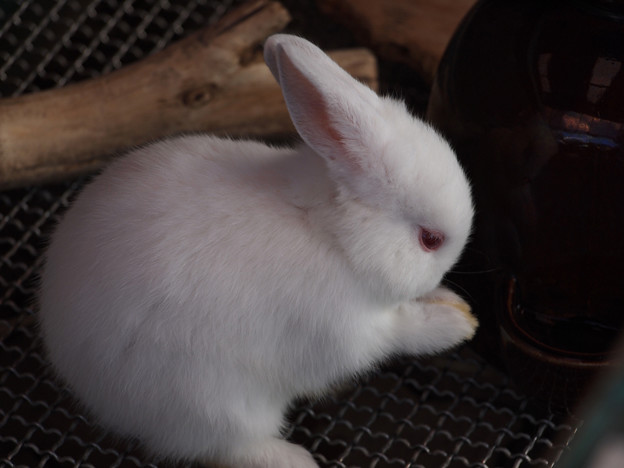|
Polish Rabbit
The Polish rabbit is compact breed of domestic rabbit, most often bred by fanciers (as opposed to hobbyists) and commonly exhibited in rabbit shows. Despite its name, the Polish rabbit likely originated in England, not Poland. The breed known in the UK as ''Polish'' is the breed known in the US as ''Britannia Petite.'' The breed known in the US as ''Polish'' is unknown in the UK. Appearance Today, the Polish rabbit in the US is used as a fancy exhibition breed and as a pet. Polish rabbits are small, with short ears that touch each other all the way from the base to the tip. This breed has a short head with full cheeks and bold eyes. Due to its small size, the Polish rabbit is often confused with the Netherland Dwarf, although the Polish is a little larger and its head is not rounded. There are many other differences between the two breeds, such as coat structure, body type and colors. The accepted weight a 6-months-or-older Polish rabbit in the US is 2½ to 3½ pounds, with th ... [...More Info...] [...Related Items...] OR: [Wikipedia] [Google] [Baidu] |
Rabbit - Polish Breed - White With Red Eyes - From Japan
Rabbits, also known as bunnies or bunny rabbits, are small mammals in the family Leporidae (which also contains the hares) of the order Lagomorpha (which also contains the pikas). ''Oryctolagus cuniculus'' includes the European rabbit species and its descendants, the world's 305 breeds of domestic rabbit. ''Sylvilagus'' includes 13 wild rabbit species, among them the seven types of cottontail. The European rabbit, which has been introduced on every continent except Antarctica, is familiar throughout the world as a wild prey animal and as a domesticated form of livestock and pet. With its widespread effect on ecologies and cultures, the rabbit is, in many areas of the world, a part of daily life—as food, clothing, a companion, and a source of artistic inspiration. Although once considered rodents, lagomorphs like rabbits have been discovered to have diverged separately and earlier than their rodent cousins and have a number of traits rodents lack, like two extra incisors ... [...More Info...] [...Related Items...] OR: [Wikipedia] [Google] [Baidu] |
Domestic Rabbit
A domestic or domesticated rabbit (''Oryctolagus cuniculus domesticus'')—more commonly known as a pet rabbit, bunny, bun, or bunny rabbit—is a subspecies of European rabbit, a member of the lagomorph family. A male rabbit is known as a ''buck,'' a female is a ''doe,'' and a young rabbit is a ''kit'', or ''kitten''. Rabbits were first used for their food and fur by the Romans, and have been kept as pets in Western nations since the 19th century. Rabbits can be housed in exercise pens, but free roaming without any boundaries in a rabbit-proofed space has become popularized on social media in recent years. Beginning in the 1980s, the idea of the domestic rabbit as a house companion, a so-called ''house rabbit'' similar to a house cat, was promoted. Rabbits can be litter box-trained and taught to come when called, but they require exercise and can damage a house that has not been "rabbit proofed" based on their innate need to chew. Accidental interactions between pet rabbits ... [...More Info...] [...Related Items...] OR: [Wikipedia] [Google] [Baidu] |
Britannia Petite
Britannia () is the national personification of Britain as a helmeted female warrior holding a trident and shield. An image first used in classical antiquity, the Latin ''Britannia'' was the name variously applied to the British Isles, Great Britain, and the Roman province of Britain during the Roman Empire. Typically depicted reclining or seated with spear and shield since appearing thus on Roman coins of the 2nd century AD, the classical national allegory was revived in the early modern period. On coins of the pound sterling issued by Charles II of England, Scotland, and Ireland, Britannia appears with her shield bearing the Union Flag. To symbolise the Royal Navy's victories, Britannia's spear became the characteristic trident in 1797, and a helmet was added to the coinage in 1825. By the 1st century BC, Britannia replaced Albion as the prevalent Latin name for the island of Great Britain. After the Roman conquest in 43 AD, ''Britannia'' also came to refer to the Roman pr ... [...More Info...] [...Related Items...] OR: [Wikipedia] [Google] [Baidu] |

.jpg)

